Block Shop Textiles is the brain-child of Los Anglese based sister, Lily and Hopie Stockman.
Image courtesy of: The Cultural-ist
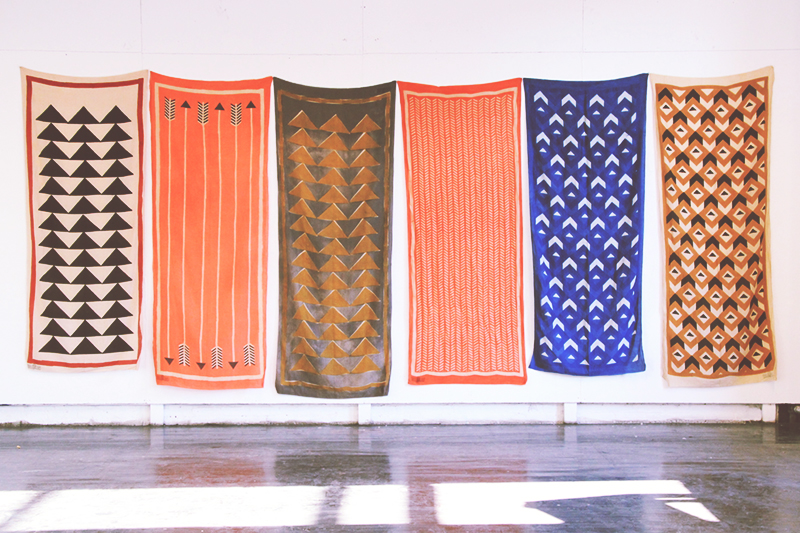
Block Shop Textiles is the brain-child of Los Anglese based sister, Lily and Hopie Stockman.
Image courtesy of: The Cultural-ist
What happens when you merge California boho designs with traditional Indian hand-block printing techniques? This unique marriage yields Block Shop… a company that employs artisans in Bagru, Rajasthan (India) to locally produce one-of-a-kind scarfs which are inspected and shipped from Los Angeles.
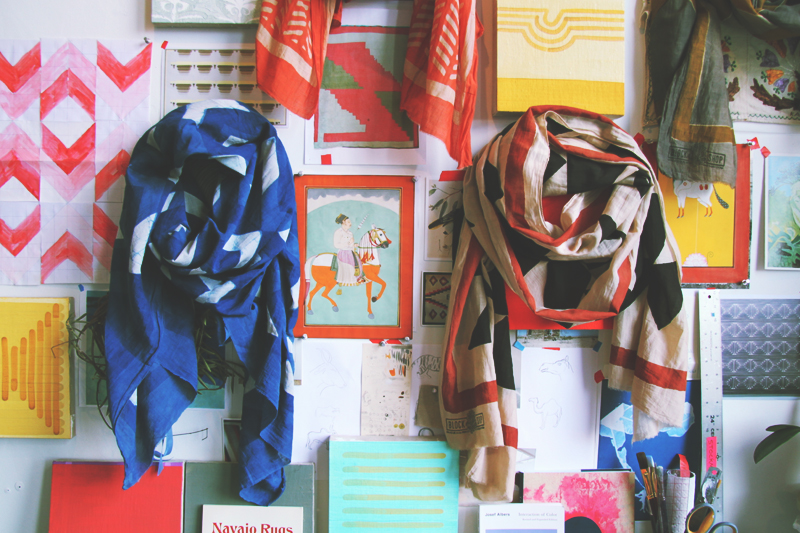
By combining traditional Rajasthani designs with the minimalistic desert aesthetic, inspired from Joshua Tree, the textiles are printed one at a time with hand-carved wooden blocks by experienced master printers in Bagru.
Image courtesy of: Oh Happy Chartreuse
In 2010, Lily was residing in India and there, she fell in love with the traditional textiles of Rajasthan. Soon after, Lily met Vijendra Chhipa, a master printer from the fifth generation of local artisans. Chip was the founder of a cooperative of hand block printers in Bagru, a little village not far from Jaipur. When Lily’s sister, Hopie, visited India a year later, she realized that this immense beauty was something that deserved international attention and exposure. Thus, Block Shop Textiles was formed.
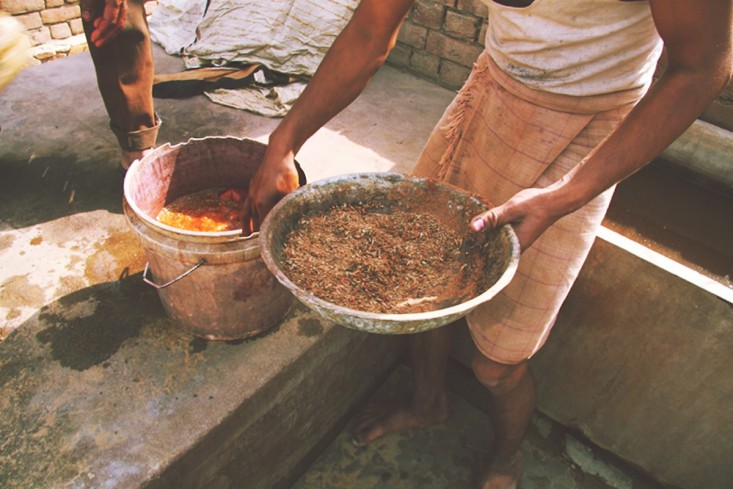
Local flowers are soaked in order to prepare them for the natural dye-making process. 20 printers work with Block Shop Textiles, most of whom are from nearby villages whose families have been in the textile business for many generations.
Image courtesy of: Remodelista
The brightness of the colors come from natural, non-toxic dyes such as onion, pomegranate skins and turmeric. These materials have been used for traditional textile printing for many centuries. The wastewater is recycled as grey-water irrigation and used in fields around Bagru; thus, the process remains completely eco-friendly.
Once printed, the scarves are spread out on a communal drying field and left under the hot sun for 3 long days. Once the color is set, the textiles are boiled in a copper pot with alum and flowers, dried again on the hot ground, and shipped to Los Angeles where the Stockman sisters do a thorough inspection and ship them out.
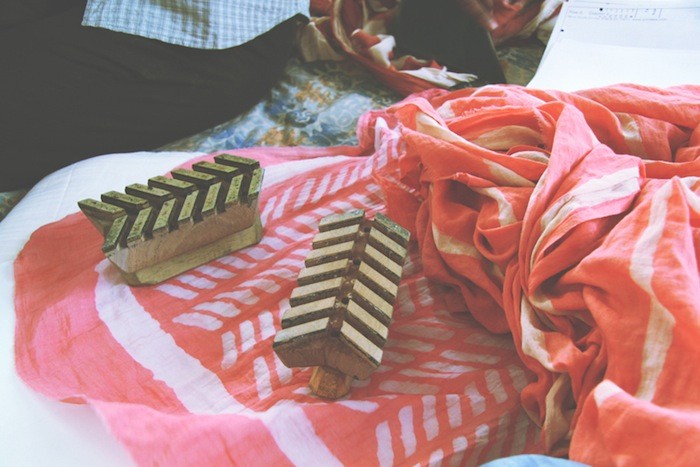
Occasionally, the Stockman sisters receive an a scarf stamped with the “Bagru blessing”, a hoof print of an errant cow.
Image courtesy of: Remodelista
The designs are always drawn freehand, in ink and watercolor. As Lily says, “We insist on keeping the hand involved in every step of the process.” After the pattern is created, designs are expertly carved into sisal wood blocks. Then, the printers dip the blocks into a dye tray… and stamp the fabric with one quick and precise motion. As every color requires a separate printing process, you can imagine how time-consuming this becomes.
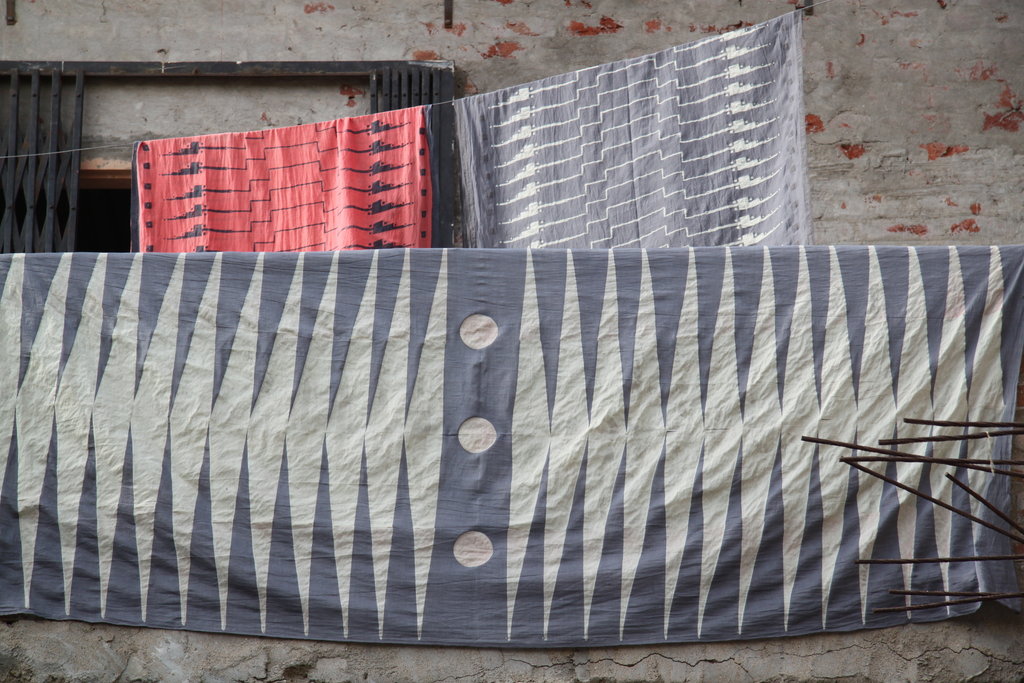
Says Lily, “We want people to think about the process: how the blocks fit together, how the printers create the pattern on a silk cotton surface. What’s implied is the hand. And we hope this comes through in the subtle imperfections that make each scarf unique.”
Image courtesy of: The New York Times Style Magazine
Twice a year from Los Angelse, the sisters come up with new designs for their scarves. Once production goes into it’s final phase, the sisters fly to India to oversee the end of this entirely hand-made process. What we love most is that this is a completely tech-free process… almost entirely unheard of in today’s times!
As an added but important bonus, a percentage of the sales go back into the community; several years ago the sisters purchased a mobile health care clinic which treated many of the community’s locals.